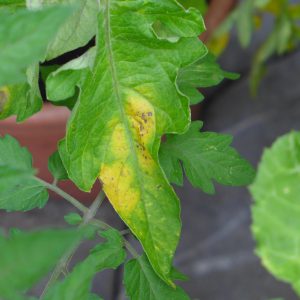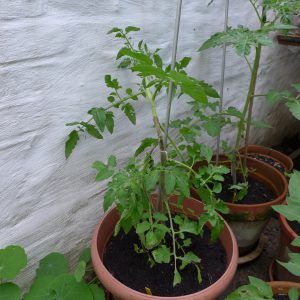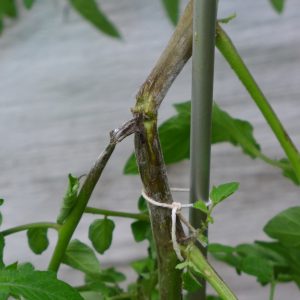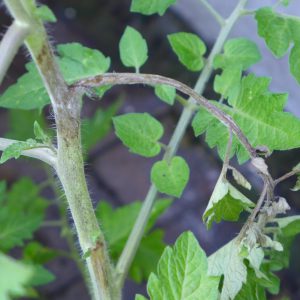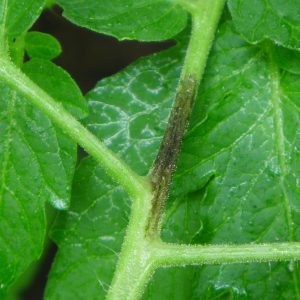
Tomato plants grown outdoors do not like wet and damp conditions. This spring in Belgium has been one of the worst in years with constant heavy rain. For the first time in this garden a number of the tomato plants have been affected by the plant disease, early blight alternaria alternata.
Tomato blight comes in early and late varieties. In Europe rain at the end of summer usually brings on the late variety. This year’s extreme wet conditions have meant the plants sitting wet for long periods of time leading to the leaf damage and black spot indicative of the disease.
Quickly removing damaged leaves can slow an outbreak of the disease, but once infected the disease can quickly spread to the stems causing these to rot and break. Some varieties of tomato are more resistant to the disease than others and keeping mixed varieties together does slow its spread.
Good observation is key here. Spotting the first signs of leaf damage or black spot and removing these leaves immediately can stop the spread to the stems. Continuing rain does not help. Ensuring plants are well supported off the ground does help.
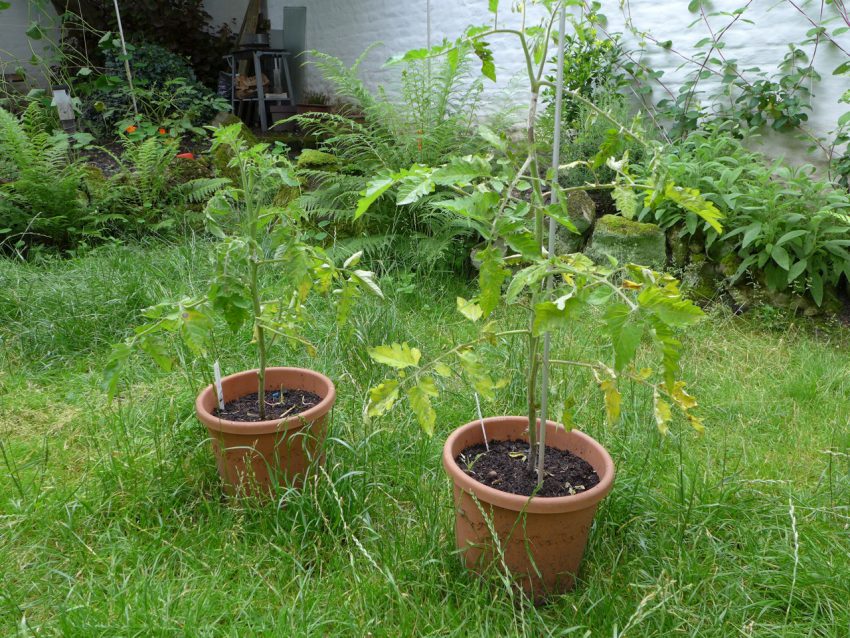
When the infection is established in the plant it is best to remove the plant from the ground and away from other plants. The plant is best binned, not added to compost as the disease can stay in the soil and plant remains. Early blight and late blight are every tomato growers worst nightmare.
